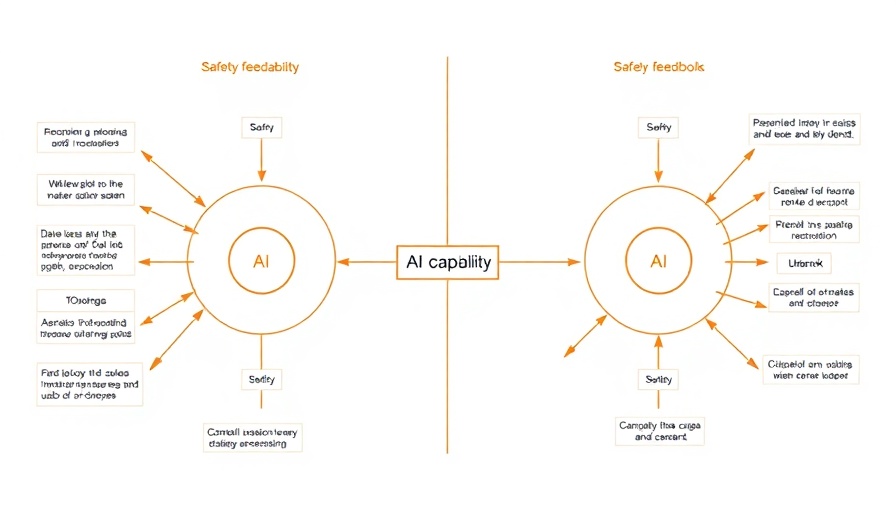
Understanding AI Safety: A Necessity for Businesses
As artificial intelligence (AI) technologies continue to advance, the imperative to prioritize AI safety grows ever clearer. Business leaders across tech-driven and marketing-centric industries are increasingly aware that the capacity for AI to enhance productivity comes with significant risks. The concept of 'AI for AI safety' posits the need for companies to leverage frontier AI labor to build safer AI systems. Especially in a landscape where AI's potential harms could challenge operational integrity, understanding and implementing these safety mechanisms has become a critical business strategy.
The Feedback Loops: A Dual Challenge
Foremost in the discussion around AI safety is the interaction of two feedback loops: the AI capabilities feedback loop and the safety feedback loop. The former drives the relentless pursuit of higher-performing AI systems, while the latter aims to ensure those systems are developed with safety in mind. The challenge for businesses lies in maintaining a balance between advancing AI capabilities and implementing necessary safety measures. Misalignment between these two loops could result in disastrous consequences; therefore, a clear focus on safety can help steer development in the right direction.
Why AI for AI Safety Matters
AI technologies have become increasingly integrated into corporate strategies, serving functions from customer engagement to productivity enhancement. However, with great power comes great responsibility. If businesses harness AI for enhancing safety, they can potentially mitigate misalignment risks that could disrupt operations and cause financial harm. This is not a theoretical exercise; it's about real, quantifiable outcomes that support business stability.
Industry Perspectives on AI Alignment
Organizations like OpenAI have made it clear that the road to beneficial AI entails not only innovation but a comprehensive understanding of the associated risks. Their multi-pronged approach emphasizes proactive risk mitigation strategies, iterative deployment, and extensive transparency—all essential for building public trust and ongoing collaborative efforts in AI safety. Businesses that recognize the value of these principles stand to gain significantly in market reputation, operational efficiency, and stakeholder confidence.
Actionable Insights for Business Leaders
Incorporating AI safety measures can be a daunting task, but there are practical steps organizations can take:
- Invest in Research: Allocate resources to safety research and training programs that enhance employee understanding of AI risks.
- Iterative Development: Deploy AI technologies in phases, allowing for gradual adjustment and evaluation of safety protocols.
- Engage with the Community: Foster discussions around AI safety within your industry to share best practices and collectively advance the cause.
- Benchmark Against Best Practices: Use guidelines from leading organizations involved in AI safety to structure your own policies.
By implementing these strategies, businesses can better harness AI technologies while safeguarding against inherent risks.
The Future of AI Safety in Business
As we move deeper into the future where AI plays an increasingly central role, the integration of safety principles will distinguish leading organizations from others. Aligning business models with robust AI safety measures will not only protect companies from potential crises but also create a competitive edge. The foresight to prioritize AI safety will ultimately dictate the successful integration of this transformative technology into the workplace.
In conclusion, understanding and advancing AI safety is not just an ethical imperative; it is a critical business strategy. By embedding safety into the AI development process and fostering a culture of transparency and action, CEOs and business professionals can navigate the changing landscape of technology with confidence and integrity. Begin taking these steps now to ensure your organization leads in AI innovation by also prioritizing safety.
 Add Row
Add Row  Add
Add 




 Add Row
Add Row  Add
Add 

Write A Comment